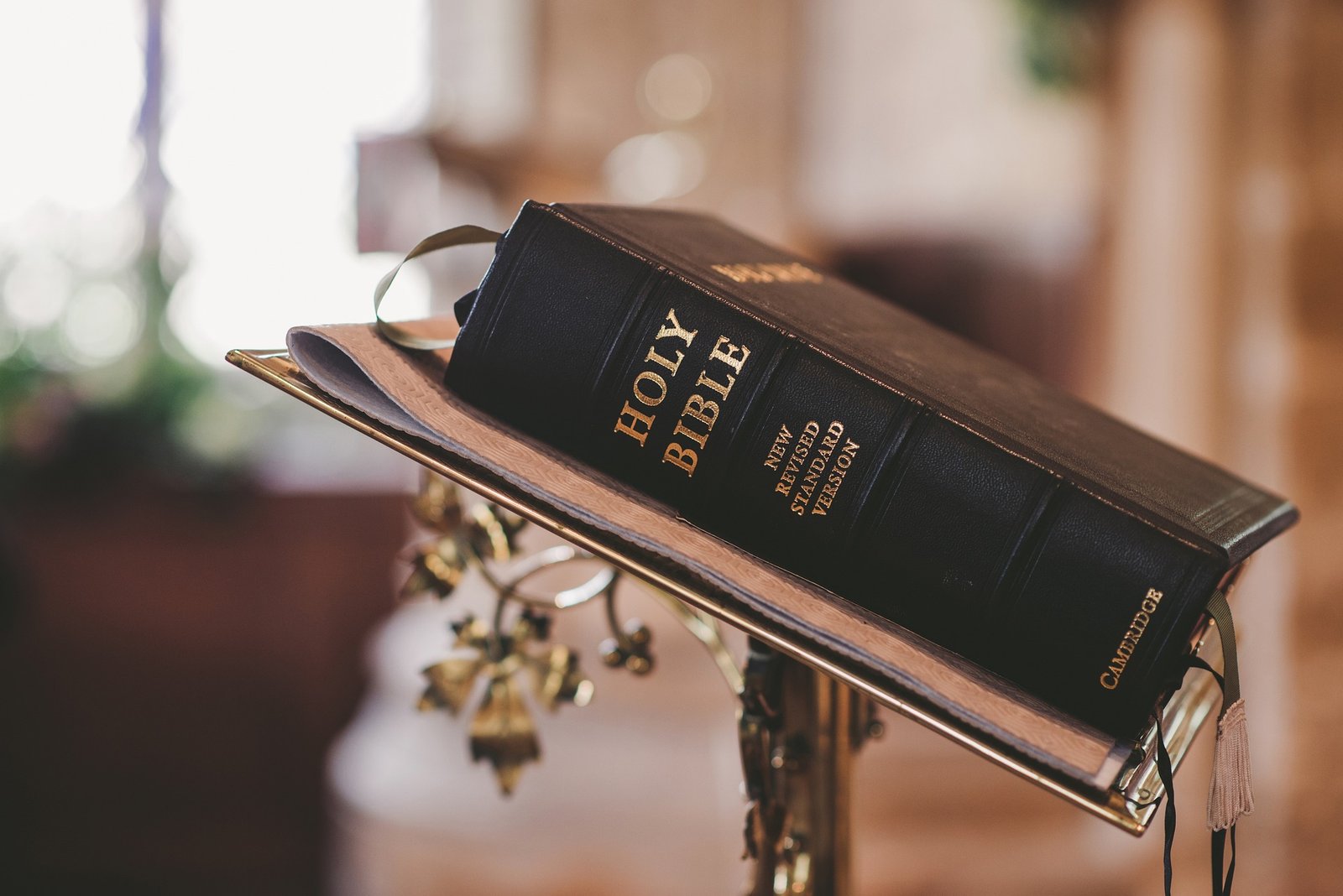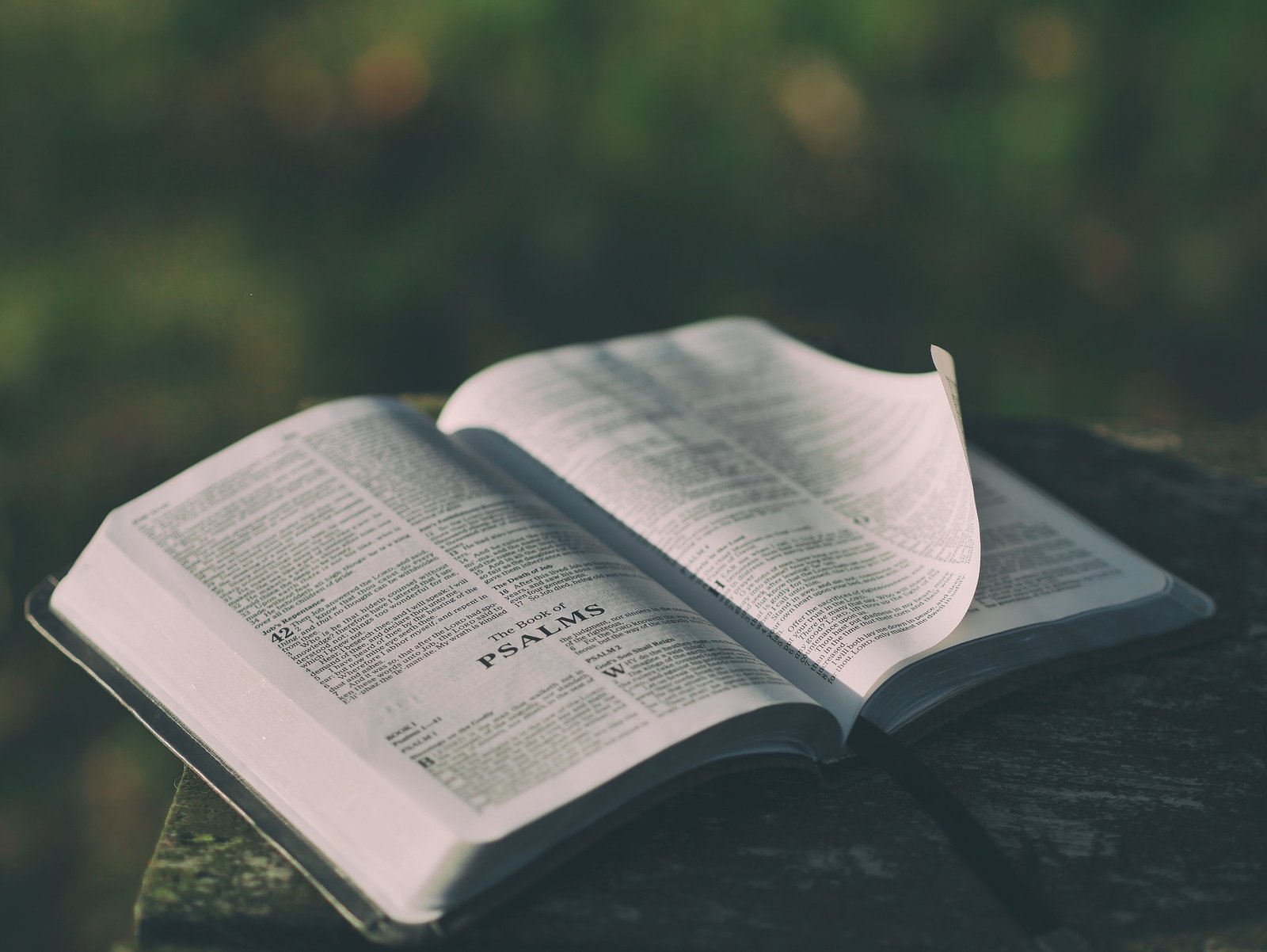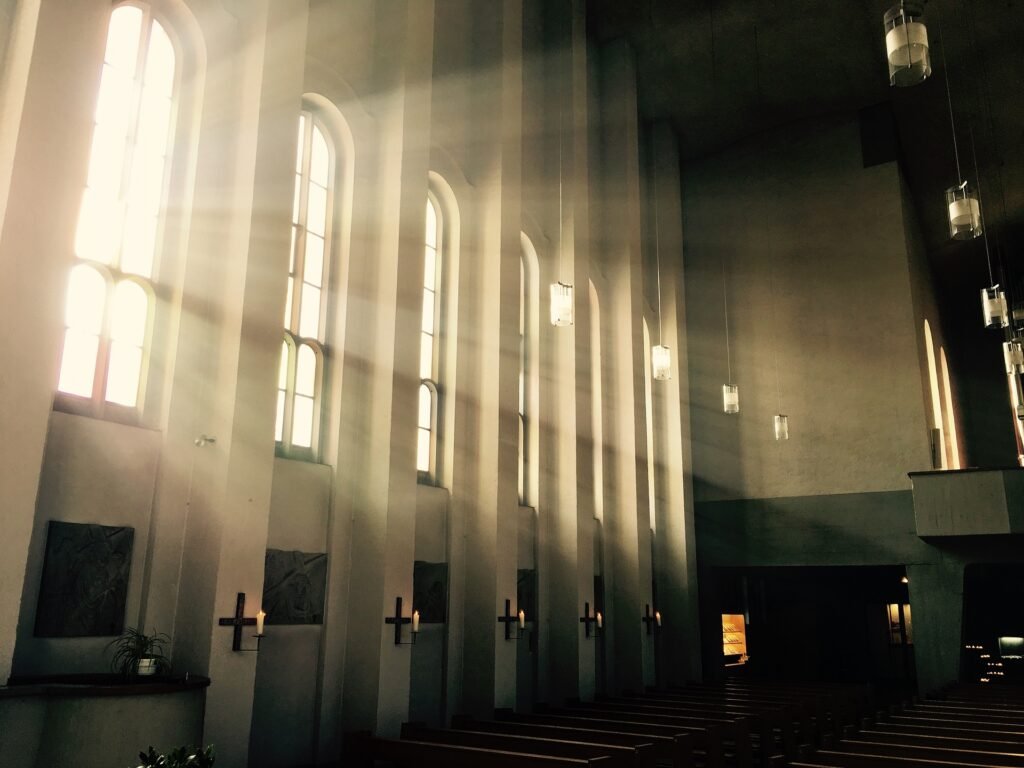From ancient biblical times to modern worship services, the fragrant smoke of incense has served as a powerful symbol of prayer rising to heaven. This comprehensive guide explores how Christians across traditions use incense to enhance their spiritual connection.

Introduction
From the echoing chants in monasteries to the resonating bells in cathedrals, religious rituals have always been enveloped in a medley of sensory experiences. These experiences, whether auditory, visual, or olfactory, often serve as bridges, connecting the tangible to the intangible, the earthly to the divine. Among these, the scent of burning incense stands out as a particularly evocative symbol, its fragrant smoke wafting upwards, reminiscent of prayers rising to the heavens[1].
While incense is commonly associated with Eastern religions or ancient Egyptian rites, its place within Christianity has deep historical roots that continue to influence worship practices today. Across various Christian traditions—Orthodox, Catholic, and some Protestant denominations—incense serves as both a symbolic and practical element in the worship experience[2].
This comprehensive guide explores the biblical foundations, historical development, and contemporary practices of Christian prayer with incense. Whether you’re seeking to understand this ancient tradition or looking to incorporate it into your personal prayer life, this article provides the insights and practical guidance you need.
Biblical Foundations of Incense in Prayer
Old Testament Origins
The use of incense in worship has its origins in the earliest practices of the Israelites. In Exodus 30:1-10, God gives Moses specific instructions for constructing an altar of incense to be placed in the Tabernacle[3]. The Lord commanded:
“You shall make an altar for burning incense; make it of acacia wood… Aaron shall burn fragrant incense on it; he shall burn it every morning when he tends the lamps.” (Exodus 30:1, 7)
This wasn’t merely aesthetic—it was a divinely ordained element of worship. The composition of the sacred incense was also specifically prescribed in Exodus 30:34-38:
“Take sweet spices, stacte, and onycha, and galbanum, sweet spices with pure frankincense (an equal part of each), and make an incense blended as by the perfumer, seasoned with salt, pure and holy.” (Exodus 30:34-35)
The importance of incense in Old Testament worship cannot be overstated. It was offered twice daily on the golden altar, symbolizing the perpetual prayer and devotion of God’s people[4]. The high priest would also carry incense into the Holy of Holies on the Day of Atonement, creating a cloud that would shield him from the direct presence of God (Leviticus 16:12-13).
Incense as a Symbol of Prayer
Perhaps the most explicit biblical connection between incense and prayer comes from Psalm 141:2, where David writes:
“Let my prayer be counted as incense before you, and the lifting up of my hands as the evening sacrifice.” (Psalm 141:2)
This poetic parallel establishes a metaphorical relationship that would influence Christian understanding for centuries to come. Just as incense rises upward, visible and fragrant, so too do the prayers of the faithful ascend to God[5].

New Testament References
In the New Testament, incense continues to carry symbolic significance. In the Gospel of Luke, Zechariah the priest was offering incense in the temple when the angel Gabriel appeared to him with news of John the Baptist’s birth (Luke 1:8-11). This pivotal moment in salvation history occurred during an incense offering, highlighting its continued importance[6].
The Book of Revelation contains several references to incense in the context of heavenly worship:
“And another angel came and stood at the altar with a golden censer, and he was given much incense to offer with the prayers of all the saints on the golden altar before the throne, and the smoke of the incense, with the prayers of the saints, rose before God from the hand of the angel.” (Revelation 8:3-4)
This apocalyptic imagery reinforces the connection between incense and prayer, suggesting that this symbolic relationship continues in the heavenly realm[7]. The presentation of frankincense by the Magi to the infant Jesus (Matthew 2:11) also foreshadows Christ’s priestly role, as incense was traditionally associated with priesthood.
Historical Development of Christian Incense
Early Christian Practices
The early Christian community had a complex relationship with incense. During the Roman persecutions, Christians often refused to burn incense to the emperor or pagan gods, considering it idolatrous. This refusal became a defining marker of Christian identity and sometimes led to martyrdom[8].
However, archaeological evidence and historical documents suggest that by the 4th century, as Christianity became more established, incense began to be incorporated into Christian worship. The Church historian Eusebius mentions the use of incense in Christian ceremonies, and the Apostolic Constitutions (c. 375 AD) reference incense being used during the Eucharistic liturgy[9].
The theologian Pseudo-Dionysius the Areopagite (5th-6th century) provided one of the earliest theological explanations for Christian incense use, writing that “the sacred incense represents the fragrance of Christ spreading over all things”[10].
Medieval Developments
By the medieval period, incense had become firmly established in Western and Eastern Christian liturgical practices. The development of the thurible (incense censer) with chains allowed for more elaborate incensation rituals. Medieval liturgical manuals such as the Roman Ordines provided detailed instructions for when and how incense should be used during the Mass[11].
Incense also took on additional symbolic meanings during this period. Thomas Aquinas (1225-1274) explained that incense represented devotion, virtue, and the good odor of Christ. He wrote that “incense signifies the devotion of prayer… and thus it is suitable that it should rise like incense in the sight of God”[12].
The use of incense became increasingly elaborate in medieval cathedrals, with special thuribles designed to create impressive clouds of smoke during major feast days and processions, enhancing the multisensory worship experience[13].
Eastern Orthodox Incense Traditions
In the Eastern Orthodox tradition, incense holds a central place in both liturgical and personal prayer practices. The Orthodox Church has preserved ancient incense traditions that date back to the earliest centuries of Christianity[14].
Liturgical Use
In Orthodox liturgy, incense is used extensively throughout the Divine Liturgy and other services. The priest or deacon censes the altar, the icons, and the faithful, representing the sanctification of all creation and the prayers of the community rising to heaven[15].
When censing, the priest or deacon typically recites Psalm 50 (51), particularly the verse, “Lord, I have cried unto Thee, hearken unto me. Attend to the voice of my supplication when I cry unto Thee.” This reinforces the connection between incense and prayer[16].
Metropolitan Kallistos Ware explains the significance: “The visible smoke symbolizes the invisible presence of God in the church. Just as the smoke of incense rises upward, so too do our prayers ascend to the throne of God”[17].
Athonite Incense Tradition
Mount Athos, the spiritual center of Orthodox monasticism, has developed a distinctive tradition of incense making and use. Athonite-style incense typically begins with pure frankincense tears mixed with aromatic oils and wood resins. The monasteries on Mount Athos produce their own incense following recipes that have been preserved for centuries[18].
The incense used in Orthodox worship is often composed of frankincense with additions of rose, lavender, or other natural aromatics. Each monastery may have its own distinctive blend, often named after saints or feast days[19].
Home Prayer Practice
Orthodox Christians commonly use incense in their home prayer corners (icon corners). A traditional prayer offered while burning incense at home is:
“Hear me, O Lord. Let my prayer be set forth as incense before you, the lifting up of my hands as an evening sacrifice. Hear me, O Lord. We offer you incense, Christ our God; receive it on your heavenly altar, and send down to us in return the grace of your all-holy Spirit.”[20]
The Orthodox faithful are encouraged to cense their icons and home during evening prayers, creating a sacred atmosphere that mirrors church worship. This practice helps to sanctify the home and reminds believers that their domestic space is also a place of prayer and divine presence[21].

Roman Catholic Incense Practices
Roman Catholic tradition incorporates incense into various liturgical celebrations, particularly in more solemn forms of the Mass and during specific rituals throughout the liturgical year[22].
Liturgical Use
In the Roman Catholic Mass, incense may be used at several points:
- During the entrance procession
- At the beginning of Mass, when the altar and cross are incensed
- Before the reading of the Gospel
- During the preparation of the gifts
- At the elevation of the Host and chalice during the Eucharistic Prayer
- During exposition and benediction of the Blessed Sacrament
According to the General Instruction of the Roman Missal: “Thurification or incensation is an expression of reverence and of prayer, as is signified in Sacred Scripture (cf. Ps 141 [140]:2; Rev 8:3)”[23].
The manner of incensation in the Roman Rite is distinctive, with specific numbers of “swings” of the thurible depending on what is being incensed. For example, the Blessed Sacrament, a relic of the True Cross, and images of the Lord exposed for public veneration receive three double swings, while the clergy and people receive two swings[24].
Theological Understanding
Pope Benedict XVI, known for his attention to liturgical symbolism, explained the theological significance of incense in Catholic worship:
“The cloud of incense that envelops the altar symbolizes the Church’s offering and prayer rising up to God. Incensing the offerings, the crucifix, the altar, the priest and the people, shows how our prayer and offering are made in communion with Christ and together rise up to God.”[25]
The Catechism of the Catholic Church further connects incense to the sacrificial nature of the liturgy, where Christ’s sacrifice is made present, and the prayers of the faithful join with His perfect offering to the Father[26].
Home Prayer Practice
While less formalized than in Orthodox tradition, many Catholics also incorporate incense into home devotional practices. This may include burning incense during the recitation of the Rosary, during family prayer, or before a home altar or shrine[27].
Catholic theologian Scott Hahn notes: “Just as incense was used in the Jerusalem Temple to signify the presence of God, Catholic families can use incense in the domestic church—the Christian home—to remind themselves of God’s presence in their family life”[28].

Protestant Views on Prayer with Incense
Protestant attitudes toward incense vary considerably across denominations, reflecting different theological perspectives on worship, symbolism, and church tradition[29].
Historical Context
During the Protestant Reformation, many reformers reacted against what they perceived as excessive ceremonialism in the medieval church. Martin Luther maintained a more moderate position on liturgical elements like incense, while more radical reformers like John Calvin and Ulrich Zwingli sought to eliminate such practices, considering them potential distractions from the Word of God[30].
The English Reformation took a middle path, with the Church of England retaining some liturgical elements while simplifying others. The Oxford Movement in the 19th century led to a revival of incense use in some Anglican churches, creating a tradition that continues in many Anglo-Catholic parishes today[31].
Contemporary Protestant Practices
Contemporary Protestant attitudes toward incense generally fall into three categories:
- Liturgical Protestants: Denominations such as Anglicans/Episcopalians, Lutherans, and some Methodists may use incense, particularly in “high church” services. The Episcopal Book of Worship allows for incense during processions, at the Gospel reading, and at the preparation of the altar[32].
- Moderately Reformed Traditions: Presbyterian, Reformed, and many Methodist churches typically do not use incense in corporate worship but may acknowledge its biblical symbolism. Some churches in these traditions are reconsidering ancient practices, including incense, as part of a broader interest in historical Christian worship[33].
- Free Church/Evangelical Traditions: Baptist, Pentecostal, and most evangelical churches generally avoid incense in corporate worship, emphasizing simplicity and directness in approaching God. However, individual believers in these traditions might incorporate incense into private devotions[34].
Theological Reflections
Protestant theologian Robert E. Webber, a proponent of “ancient-future” worship, suggests that symbolic practices like incense can enrich Protestant spirituality when properly understood:
“The sensory aspects of worship, including visual symbols, music, and even aromatic elements like incense, can serve as windows to the transcendent, helping us worship God with all our senses as whole persons created in God’s image.”[35]
Even in denominations that don’t use literal incense, the biblical metaphor of prayers rising like incense remains powerful. Many Protestant hymns and prayers reference this imagery, showing that the theological concept remains meaningful across denominational lines[36].
Theological Significance of Incense
Across Christian traditions, theologians have reflected on the multiple layers of meaning in the use of incense during prayer and worship[37].
Prayer Made Visible
Perhaps the most fundamental theological understanding of incense is that it makes prayer visible. The rising smoke provides a tangible image of our prayers ascending to God’s throne. This visual reinforcement helps believers conceptualize the reality that their prayers are truly being lifted to God[38].
Orthodox theologian Alexander Schmemann explains:
“Incense is the visibility of the invisible, the materialization of the spiritual. It manifests the acceptance of our sacrifice by God and the sanctification of all that comes from Him.”[39]
Offering and Sacrifice
Incense represents offering and sacrifice in Christian theology. Just as the incense is consumed by fire, being transformed into fragrant smoke, so too are the faithful called to offer themselves as “living sacrifices” (Romans 12:1). The burning of incense thus becomes a symbol of self-offering and devotion[40].
Catholic theologian Romano Guardini notes that “the grains of incense are like our individual prayers and sacrifices, which together rise as one offering to God”[41].
Divine Presence
Incense also symbolizes the presence of God. In the Old Testament, God often appeared in clouds or smoke (Exodus 19:9, 1 Kings 8:10-11). The smoke of incense can remind worshippers of God’s mysterious presence among them, creating a sensory bridge to the divine[42].
The Catechism of the Catholic Church states that incense “signifies the Church’s offering and prayer rising up to God” and also symbolizes “reverence and prayer” (CCC 1154)[43].
Sanctification and Blessing
The act of censing people and objects has been understood as a form of blessing and sanctification. When the priest incenses the altar, icons, or the congregation, this action is seen as setting them apart for sacred purposes and acknowledging their participation in God’s holiness[44].
In many traditions, homes are blessed with incense to sanctify the living space, recognizing that all of creation is called to be transformed by God’s presence[45].

Types of Incense Used in Christian Prayer
Christians throughout history have used various forms of incense in their worship and prayer practices. The types of incense used often reflect both theological symbolism and practical considerations[46].
Traditional Resins
Frankincense
Frankincense (Boswellia sacra) holds special significance in Christianity as one of the gifts brought by the Magi to the infant Jesus. Its sweet, citrusy, and slightly pine-like aroma has been used in Christian worship since the early church. Theologically, frankincense is associated with Christ’s priesthood and divinity[47].
The highest quality frankincense comes from Somalia, Oman, and Yemen. In Orthodox and Catholic traditions, pure frankincense or frankincense blended with other aromatics is the most common material used in liturgical settings[48].
Myrrh
Myrrh (Commiphora myrrha), another gift of the Magi, has a more earthy, slightly bitter aroma. Historically used in embalming, myrrh symbolically represents Christ’s mortality and suffering. It is often used during penitential seasons like Lent or for funerals and memorial services[49].
Copal
Copal, derived from various trees of the Burseraceae family, is commonly used in Latin American Christian traditions. With a scent similar to frankincense but more citrusy, copal has been used in religious ceremonies since pre-Columbian times and was adapted into Christian practice by early missionaries[50].
Church Blends
Most Christian traditions use blended incense, combining several resins and aromatics to create distinctive fragrances for different liturgical purposes:
- Orthodox Church Blends: Traditional Athonite-style incense typically combines frankincense with natural aromatics like rose, jasmine, or citrus. Monasteries often create their own signature blends, such as the renowned incense from the Holy Cross Monastery or St. Anne’s Skete on Mount Athos[51].
- Roman Catholic Blends: Catholic liturgical incense often includes frankincense, benzoin, and storax, sometimes with additions of vanilla, rose, or sandalwood. Pontifical incense, used for special celebrations, typically has a stronger, more complex aroma[52].
- Seasonal Blends: Many churches use different incense blends for different liturgical seasons. For example, rose-scented incense might be used for Marian feasts, while a blend with more myrrh might be appropriate for Lent[53].
Forms of Incense
Christian incense comes in several forms, each suited to different settings and purposes:
- Grains and Tears: Natural resin pieces (called “tears”) or granulated resins are the traditional form used in thuribles with charcoal. This is the most common form for liturgical use in Orthodox and Catholic churches[54].
- Powder: Finely ground incense is sometimes used in home settings or smaller church services as it ignites more easily on charcoal[55].
- Sticks and Cones: While less traditional for liturgical use, incense sticks and cones are often used for home prayer, especially in contexts where using a thurible is impractical. Many Christian supply stores now offer stick incense with traditional church scents[56].
- Athonite-Style Paste: This form, developed on Mount Athos, consists of powdered frankincense mixed with aromatic oils and natural binding agents. The resulting paste is formed into small pieces that melt slowly on charcoal, producing a long-lasting and aromatic smoke[57].

Practicing Incense Prayer at Home
Many Christians are rediscovering the practice of using incense in their home prayer life. This ancient tradition can add depth and sensory richness to personal or family devotions[58].
Setting Up a Prayer Space
Creating a dedicated prayer space can enhance your experience of praying with incense:
- Select a Quiet Area: Choose a corner or small area of your home that can be set aside for prayer. This doesn’t need to be large—even a shelf or small table can serve as a prayer corner[59].
- Include Sacred Images: Place icons, crosses, or other religious images that help focus your attention on God. In many traditions, prayer corners include images of Christ, the Virgin Mary, and saints with particular significance to your family[60].
- Provide Adequate Ventilation: Ensure the area has some airflow, either through a nearby window or fan, especially when using incense[61].
- Add Prayer Resources: Keep your Bible, prayer books, devotionals, or rosary nearby for easy access during prayer times[62].
Essential Equipment
For burning incense during prayer at home, you’ll need:
- Incense Burner: Options include traditional censers (thuribles), stationary incense burners, or simpler devices like small heat-resistant dishes. For beginners, a simple ceramic burner is often easiest to use[63].
- Charcoal Discs: If using resin incense, you’ll need self-igniting charcoal discs designed for incense (not the type used for grilling).
- Incense: Choose from the types discussed in the previous section. Many Christians prefer to use the same type of incense used in their church tradition[64].
- Heat-Resistant Surface: Always place your incense burner on a non-flammable surface like ceramic tile, stone, or metal[65].
- Tongs or Tweezers: These are helpful for handling charcoal discs and adjusting the incense.
Prayer Practices with Incense
Orthodox Tradition
In Orthodox practice, the home prayer corner (icon corner) is censed much like in church services:
- Light the charcoal and place it in your censer or burner.
- When the charcoal is ready (glowing red), place a small amount of incense on it.
- As the incense begins to smoke, you might pray: “Let my prayer arise in Thy sight as incense, and let the lifting up of my hands be an evening sacrifice.”
- You can then cense the icons in your prayer corner, making the sign of the cross with the censer, and then cense the other areas of your home.
- Many Orthodox Christians cense their homes on major feast days, Saturdays (in preparation for Sunday), or during family evening prayers.
Catholic Tradition
While less formalized than Orthodox practice, many Catholics incorporate incense into home devotions:
- Incense can be used during family rosary, centering on a crucifix or image of Mary.
- During Advent and Christmas, some families burn frankincense as a reminder of the gifts of the Magi.
- When a priest blesses a home, incense may be used as part of the blessing ritual[66].
Simple Meditative Practice
For those new to praying with incense, a simple meditative practice can be beneficial:
- Begin by lighting your incense and taking a few deep breaths to center yourself in God’s presence.
- As the incense rises, imagine your prayers, concerns, and thanksgiving rising to God.
- Read Psalm 141 or another prayer text that resonates with you.
- Spend time in silent prayer, being mindful of how your senses help you connect with God[67].
Children and Family Participation
Including children in incense prayer can help them engage with faith through their senses:
- Explain the symbolism of incense in age-appropriate ways, connecting it to biblical stories they know.
- Allow older children to help with lighting incense (with supervision).
- Invite children to offer their own prayers as the incense rises.
- Use incense during special family occasions or blessings.
Safety Guidelines for Incense Use
While incense can enhance your prayer experience, it’s important to use it safely and responsibly, especially in home settings.
Fire Safety
The most immediate concern with incense use is fire safety:
- Never Leave Burning Incense Unattended: Always stay in the same room as burning incense.
- Use Proper Burners: Ensure your incense burner is designed for the type of incense you’re using and is stable on its surface.
- Keep Away from Flammable Materials: Place burners at least three feet away from curtains, papers, wood, and other flammable items.
- Heat-Resistant Surface: Always place incense burners on non-flammable surfaces like ceramic tile, stone, or metal trays.
- Keep Out of Reach: Keep incense, matches, and lighters out of reach of children and pets.
- Extinguish Properly: Make sure incense is completely extinguished before leaving the room or going to sleep.
Health Considerations
Be mindful of potential health effects when using incense:
- Ventilation: Always use incense in well-ventilated areas. Open a window or use a fan to maintain airflow.
- Moderation: Use incense in moderation, especially in enclosed spaces. Short, meaningful periods of incense use are preferable to continuous burning.
- Respiratory Sensitivity: Those with asthma, allergies, or other respiratory conditions should be cautious with incense use and discontinue if it causes discomfort.
- Quality Matters: Choose high-quality, natural incense without synthetic chemicals. Pure resins like frankincense and myrrh are generally considered safer than artificially scented incense sticks[68].
- Pregnancy Considerations: Pregnant women should consult with their healthcare providers about incense use and generally limit exposure to smoke of any kind.
Considerate Use
Be mindful of others when using incense:
- Household Members: Be considerate of others in your household who may be sensitive to fragrances or smoke.
- Shared Spaces: In apartments or shared living situations, be aware that incense smoke can travel through ventilation systems to other units.
- Timing: Choose appropriate times for incense use that won’t disturb others’ sleep or activities[69].
Alternatives for Sensitive Individuals
If traditional incense presents health concerns, consider these alternatives:
- Essential Oil Diffusers: These can provide aromatic benefits without smoke. Frankincense and myrrh essential oils can offer similar symbolic connections.
- Electric Incense Heaters: These devices gently heat incense without burning it, producing fragrance with minimal smoke.
- Symbolic Representations: Some prayer traditions use visual symbols of incense rising, such as raising hands in prayer, as an alternative to actual incense[70].
Conclusion
From the ancient tabernacle to modern church services and home prayer corners, the practice of prayer with incense represents one of Christianity’s most enduring sensory traditions. Its rising smoke continues to serve as a powerful symbol of prayers ascending to heaven, bridging the physical and spiritual realms[71].
The biblical foundation for incense use, established in both Old and New Testaments, has been interpreted and expressed through diverse cultural and denominational contexts throughout Christian history. Whether in the elaborate censing rituals of Orthodox liturgy, the solemn incensations of Catholic High Mass, or the simple home practices of individual believers, incense creates a multisensory prayer experience that engages body and soul[72].
For those exploring this ancient practice, incense offers a tangible connection to the communion of saints across time and space. The same fragrances that perfumed the Jerusalem temple, early Christian catacombs, medieval cathedrals, and modern churches can now enhance personal devotion, creating a sense of continuity with the great cloud of witnesses who have gone before[73].
As with any spiritual practice, the use of incense is not an end in itself but a means to deepen our relationship with God. Whether you incorporate it regularly into your prayer life or reserve it for special occasions, may the rising smoke remind you of the Psalmist’s words: “Let my prayer be set before you like incense; may the lifting up of my hands be like the evening sacrifice” (Psalm 141:2)[74].
References
- Bradshaw, P. (2018). Early Christian Worship: A Basic Introduction to Ideas and Practice. SPCK Publishing, 78-79.
- Johnson, M. E. (2009). “Incense in Christian Liturgy.” In The Oxford Handbook of Early Christian Studies. Oxford University Press, 445-447.
- [Hahn, S. (2017). The Biblical Roots of Catholic Liturgy. Emmaus Road Publishing, 112-115.
- Jungmann, J. A. (2012). The Mass of the Roman Rite: Its Origins and Development. Ave Maria Press, 103-104.
- Ratzinger, J. (Pope Benedict XVI). (2000). The Spirit of the Liturgy. Ignatius Press, 84-86.
- Brown, R. E. (2015). The Birth of the Messiah: A Commentary on the Infancy Narratives in the Gospels of Matthew and Luke. Yale University Press, 258-260.
- Beale, G. K. (2022). The Book of Revelation: A Commentary on the Greek Text. Eerdmans Publishing, 452-455.
- Martyr, J. (Trans. Roberts-Donaldson). (2014). First Apology. Christian Classics Ethereal Library.
- McGowan, A. (2014). Ancient Christian Worship: Early Church Practices in Social, Historical, and Theological Context. Baker Academic, 152-154.
- Pseudo-Dionysius. (Trans. Luibheid). (1987). The Complete Works. Paulist Press, 211-213.
- Harper, J. (1991). The Forms and Orders of Western Liturgy from the Tenth to the Eighteenth Century. Clarendon Press, 108-110.
- Aquinas, T. (Trans. Fathers of the English Dominican Province). (2017). Summa Theologica. Christian Classics Ethereal Library, Question 83, Article 5.
- Duffy, E. (2005). The Stripping of the Altars: Traditional Religion in England, 1400-1580. Yale University Press, 125-127.
- Ware, K. (2015). The Orthodox Church: An Introduction to Eastern Christianity. Penguin Books, 234-236.
- Schmemann, A. (1973). For the Life of the World: Sacraments and Orthodoxy. St. Vladimir’s Seminary Press, 62-64.
- Woolfenden, G. (2004). Daily Prayer in Christian Tradition. Liturgical Press, 183-185.
- Ware, K. (1979). The Orthodox Way. St. Vladimir’s Seminary Press, 75.
- Holy Cross Monastery. (2023). “Incense & Worship.” Retrieved from https://www.holycross.org/collections/incense-worship
- Taft, R. F. (1992). The Byzantine Rite: A Short History. Liturgical Press, 78-79.
- Monastic Republic. (2023). “Orthodox Prayer When Burning Incense at Home.” Retrieved from https://www.monasticrepublic.com/en/orthodox-prayers/prayer-when-burning-incense
- [Vassiliadis, N. P. (2005). The Mystery of Faith: An Introduction to the Teaching and Spirituality of the Orthodox Church. St. Tikhon’s Seminary Press, 134-136.
- United States Conference of Catholic Bishops. (2011). General Instruction of the Roman Missal. USCCB Publishing, ¶276-277.
- Ibid., ¶75.
- Fortescue, A. & O’Connell, J. B. (2009). The Ceremonies of the Roman Rite Described. Preserving Christian Publications, 115-118.
- Benedict XVI. (2007). The Spirit of the Liturgy. Ignatius Press, 85.
- Catechism of the Catholic Church. (1994). Libreria Editrice Vaticana, ¶1154.
- Grotti, J. S. (2019). Catholic Household Blessings and Prayers. USCCB Publishing, 45-47.
- Hahn, S. (2018). The Domestic Church: Room by Room. Emmaus Road Publishing, 89.
- McKim, D. K. (2001). Presbyterian Beliefs: A Brief Introduction. Westminster John Knox Press, 112-113.
- Nichols, A. (1991). The Panther and the Hind: A Theological History of Anglicanism. T&T Clark, 68-70.
- Yates, N. (2000). Anglican Ritualism in Victorian Britain 1830-1910. Oxford University Press, 154-156.
- The Episcopal Church. (2007). The Book of Common Prayer. Church Publishing, 141.
- Webber, R. E. (2008). Ancient-Future Worship: Proclaiming and Enacting God’s Narrative. Baker Books, 92-94.
- Piper, J. (2014). Desiring God: Meditations of a Christian Hedonist. Multnomah Books, 201-202.
- Webber, R. E. (2006). The Divine Embrace: Recovering the Passionate Spiritual Life. Baker Books, 157.
- Wesley, C. & Wesley, J. (2011). The Methodist Hymnal. Abingdon Press, Hymn 358.
- Louth, A. (2013). Introducing Eastern Orthodox Theology. SPCK Publishing, 102-104.
- Meyendorff, J. (1982). The Orthodox Church: Its Past and Its Role in the World Today. St. Vladimir’s Seminary Press, 193-195.
- Schmemann, A. (1966). Introduction to Liturgical Theology. St. Vladimir’s Seminary Press, 174.
- Bouyer, L. (1956). Liturgical Piety. University of Notre Dame Press, 212-214.
- Guardini, R. (1998). The Spirit of the Liturgy. Crossroad Publishing, 67.
- Wright, N. T. (2016). The Day the Revolution Began: Reconsidering the Meaning of Jesus’s Crucifixion. HarperOne, 233-235.
- Catechism of the Catholic Church. (1994). Libreria Editrice Vaticana, ¶1154.
- Kilmartin, E. J. (1988). Christian Liturgy: Theology and Practice. Sheed & Ward, 322-324.
- St. Silouan Orthodox Church. (2023). “Let my prayer arise as incense.” Retrieved from https://saintsilouan.org/let-my-prayer-arise-as-incense/
- Legacy Icons. (2023). “Top 10 Incense Favorites.” Retrieved from https://legacyicons.com/top-10-incense-favorites/
- Nielsen, K. (2007). Incense in Ancient Israel. E.J. Brill, 74-76.
- Orthodox Incense. (2023). “United States | Orthodox Incense.” Retrieved from https://orthodoxincense.com/domesticincense
- The National Shrine. (2023). “What the Gifts of the Magi Tell Us about Jesus.” Retrieved from https://www.nationalshrine.org/blog/what-the-gifts-of-the-magi-tell-us-about-jesus/
- Landy, D. (2015). Catholic Cultures: How Parishes Can Excel at Art, Architecture, and Ritual. Liturgical Press, 187-189.
- Orthodox Fasting. (2024). “The Liturgical Church Incense Buying Guide for Prayer Corner.” Retrieved from https://orthodoxfasting.com/5407/church-incense/
- HF Ltd. (2023). “How to Decode the Aroma: What is the Smell of Church Incense?” Retrieved from https://hfltd.com/blogs/news/what-is-the-smell-of-church-incense
- St. Patrick’s Guild. (2023). “Church Incense & Charcoal.” Retrieved from https://stpatricksguild.com/church-incense-charcoal/
- Monastery Icons. (2023). “Monastery Incense and Church Incense.” Retrieved from https://www.monasteryicons.com/category/monastery-incense
- Sisters of Carmel. (2023). “Catholic Incense.” Retrieved from https://www.sistersofcarmel.com/catholic-incense/
- Heavenly Oils. (2023). “Buy Your Christian Incense Sticks Here.” Retrieved from https://www.heavenlyoils.com/incense-sticks.html
- Ascetic Life of Motherhood. (2023). “Incense Tutorial.” Retrieved from https://www.asceticlifeofmotherhood.com/blog/incensetutorial
- Course Sidekick. (2023). “Using Catholic Incense at Home: Significance, Benefits, and Guidelines.” Retrieved from https://www.coursesidekick.com/religion/1947962
- Kravtsova, A. (2018). Home Iconostasis: How to Set Up and Decorate a Prayer Corner. St. Tikhon’s Monastery Press, 42-44.
- Stewart, C. (2019). Prayer and Community: The Benedictine Tradition. Orbis Books, 87-89.
- The Ohm Store. (2023). “Guide: Using Incense Safely, Effectively, and Mindfully!” Retrieved from https://www.theohmstore.co/blogs/our-stories/a-guide-for-using-incense-safely-effectively-and-mindfully
- Christian-Copywriter. (2025). “SEO Key Words for Blog Post: 10 Steps for Faith-Based Blogs to Get Found.” Retrieved from https://www.christian-copywriter.com/post/seo-for-faith-based-blogs-10-steps-to-get-found-by-those-searching-for-hope
- Tasbeha.org Community. (2023). “Incense in the Home.” Retrieved from https://tasbeha.org/community/discussion/14925/incense-in-the-home
- Medium. (2024). “What is The Role of Incense in Christian Worship?” Retrieved from https://medium.com/inspire-believe-grow/what-is-the-role-of-incense-in-christian-worship-696086b281f3
- National Center for Biotechnology Information. (2008). “Incense smoke: clinical, structural and molecular effects on airway disease.” Retrieved from https://pmc.ncbi.nlm.nih.gov/articles/PMC2377255/
- Peace With The Wild. (2023). “Natural Incense Sticks | Eco-Friendly & Sustainable Aromatherapy.” Retrieved from https://www.peacewiththewild.co.uk/product-category/for-the-home/incense-sticks/
- HelpUsGreen. (2023). “The Spiritual Benefits of Incense Sticks Burning.” Retrieved from https://www.helpusgreen.com/blogs/news/spiritual-benefits-of-incense-sticks-burning
- Franzicos, J. (2018). The Handbook of Healing Incenses. Llewellyn Publications, 32-34.
- Hughes, K. L. (2003). The Sensory Body in Medieval Religious Studies. Harvard University Press, 178-180.
- Biblestudytools.com. (2023). “What does the Bible say about incense?” Retrieved from https://www.gotquestions.org/Bible-incense.html
- Radical.net. (2021). “Prayer as Incense (Exodus 30:7–8).” Retrieved from https://radical.net/podcasts/pray-the-word/prayer-as-incense-exodus-307-8/
- EWTN. (2024). “Why Is Incense Used During Mass?” Retrieved from https://www.ewtn.com/catholicism/library/why-is-incense-used-during-mass-1041
- Adoremus. (2012). “Holy Smoke – The Use of Incense in the Catholic Church.” Retrieved from https://adoremus.org/2012/02/holy-smoke-the-use-of-incense-in-the-catholic-church/
- Bible Hub. (2023). “Topical Bible: Incense.” Retrieved from https://biblehub.com/topical/i/incense.htm





